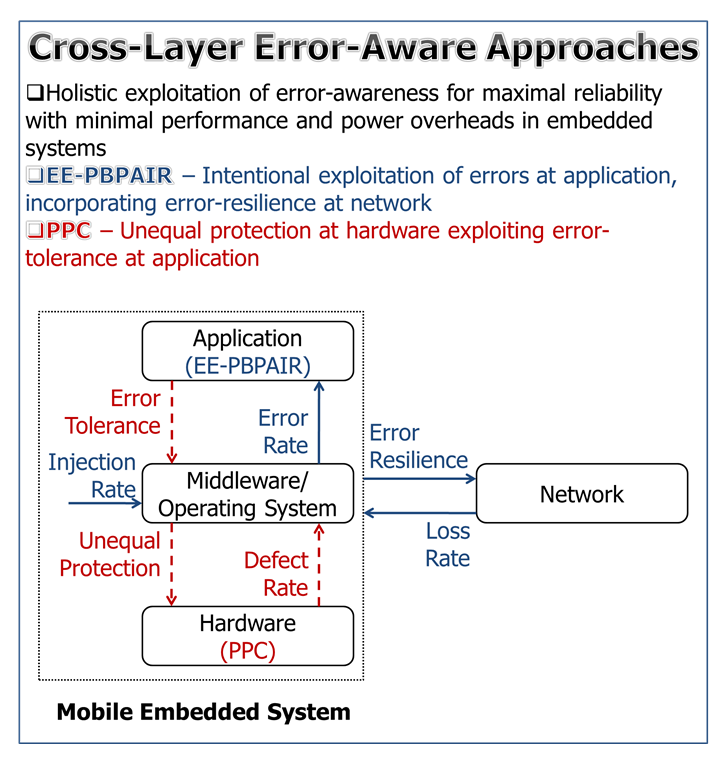Motivation
Rapid advances in processor and wireless networking technology are ushering in a new class of multimedia applications for mobile handheld devices. These devices have modest sizes and weights, and therefore inadequate resources (power, memory, display capabilities, storage and limit battery lifetime as compared to desktop and laptop systems. On the other hand, multimedia applications demand distinctive QoS and processing power, which tend to make them extremely resource hungry. Therefore, delivering high quality multimedia content to mobile handheld devices, while preserving their service lifetimes remain competing design requirements. This innate conflict introduces key research challenges in the design of multimedia applications, intermediate adaptations, and low-level architectural improvements of the device (courtesy: Dr. Radu Cornea).
Challenges in Cooperative and Cross-layer Methodology
Researchers have investigated novel techniques to combat emerging challenges in distributed embedded systems. In particular, network systems have been studied to adapt parameters across OSI seven layers. Also, mobile embedded systems such as mobile handhelds have been investigated to maximize resource savings without compromising QoS in multimedia applications. Cross-layer methodology first models a mobile embedded system (consisting of several system layers such as hardware, operating system, middleware, and application layers), identifies interaction parameters among the different levels and optimizes them to significantly increase resource savings. These system-level cooperative methods have shown their effectiveness in distributed embedded systems, especially in resource-constrained mobile devices that should consider multiple parameters such as performance, power, QoS, and reliability.
Relevant Publications
- Kyoungwoo Lee, Aviral Shrivastava, Minyoung Kim, Nikil Dutt, Nalini Venkatasubramanian, “Mitigating the impact of hardware defects on multimedia applications: A cross-layer approach”, ACM International Conference on Multimedia, Sep, 2008.
- Kyoungwoo Lee, Nikil Dutt, Nalini Venkatasubramanian,, “A cross-layer, error-aware methodology for reliable design of resource constrained embedded systems”, ACM/SIGDA Ph.D. Forum at Design Automation Conference, May, 2008.
- Kyoungwoo Lee, Nikil Dutt, Nalini Venkatasubramanian, “An experimental study on energy consumption of video encryption for mobile handheld devices”, IEEE International Conference on Multimedia and Expo, Jun, 2005.
- Shivajit Mohapatra, Radu Cornea, Hyuok Oh, Kyoungwoo Lee, Minyoung Kim, Nikil Dutt, Rajesh Gupta, Alex Nicolau, Sandeep Shukla, Nalini Venkatasubramanian, “A cross-layer approach for power-performance optimization in distributed mobile systems”, 19th IEEE International Parallel and Distributed Processing Symposium, Apr, 2005.
